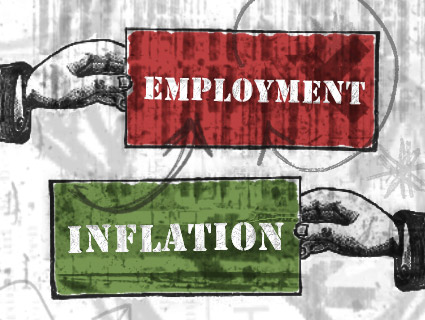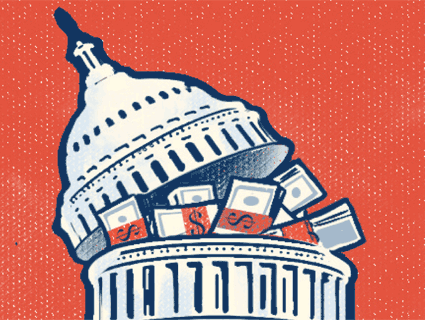
I’ve written several times before about Winner-Take-All Politics, in which Jacob Hacker and Paul Pierson argue that middle-class wage stagnation and growing income inequality are due as much to political decisions over the past 30 years as they are to broad economic trends. I find their arguments persuasive, but there’s no question that it’s a tough case to make. After all, exactly which political decisions are we talking about? Can we point to specific pieces of legislation or specific agency decisions that have retarded wage growth? In fact, we can—things like tax policy, financial deregulation, the decline of antitrust enforcement, and anti-union rulings by the NLRB all played a role. By themselves, though, these just aren’t enough to account for what’s happened. So what’s the smoking gun when it comes to the impact of politics on wage stagnation and growing income inequality?
I think Lane Kenworthy fingered the right culprit a few weeks ago: the abandonment in recent decades of full employment as even a rhetorical goal of American economic policy:
The post–World War II experiences of the rich democracies suggest three routes to rising working- and middle-class wages. One is an environment in which firms face only moderate competition in product markets and limited pressure from shareholders, allowing them to pass on a significant share of growth to their employees. This characterized the period from the late 1940s through the mid 1970s, but it’s now long gone. The second is strong unions. I see little hope of that in America’s future. The third is full employment.
But full employment is only possible if the Federal Reserve is committed to it, and this is decidedly no longer the case: “Since the late 1970s, independent central banks such as the Fed almost always have prioritized low inflation, rendering low unemployment difficult to achieve. If the Fed isn’t on board, even a workable plan for full employment supported by the American public and our elected officials probably won’t be enough.”
Following the stagflation of the 70s, conservatives decisively took over Fed policy and put it in the service of the wealthy, prioritizing low inflation over low unemployment and tacitly promising bailouts whenever Wall Street found itself in danger (a practice charmingly known as the “Greenspan put”). Matt Yglesias has a useful piece in Democracy this month arguing that progressives need to take the Fed far more seriously if we ever want to have any chance of reversing this:
Central banks and monetary policy are the primary determinant of short-term economic conditions—of the unemployment rate, and thus of workers’ ability to bargain for wages. This is, clearly, a hugely important subject in its own right. But it’s also a critical determinant of overall political conditions.
….But when Barack Obama was elected in 2008, he rather hastily chose to reappoint [Ben] Bernanke, creating a situation in which no Democrat has held the most important domestic policy job in the land since 1987. He inherited two vacancies on the Board of Governors that he left open for over a year, only putting names forward after a third vacancy emerged in 2010….Of course, no one can know for sure what the Fed would have done had Obama picked someone other than Bernanke to chair it or filled the vacancies more rapidly. But it’s certainly plausible that different personnel would have led to swifter and more forceful moves toward monetary stimulus, a more rapid end to the recession, and a lower unemployment rate.
A lot has happened over the past 30 years, but if you’re looking for a single political sea change that’s had the biggest impact on middle class wages—more important than union decline, more important than NAFTA, more important than the end of Glass-Steagall—it’s the political consensus that underlies the Fed’s reluctance to allow labor markets to stay tight enough to generate wage increases in the real economy. And it’s something we’re seeing all over again right now, as the DC chattering classes have almost unanimously decided that inflation is our real enemy right now, even though core inflation is running around 1% and unemployment is still near 9%.
This is a policy beloved of the business community, which prefers loose labor markets that keep wages low and executive compensation high, but it hasn’t always been the Fed’s policy and it’s not written in stone that it has to be now. Tight labor markets and rising middle-class wages are, to a large extent, a choice we make. Politics took them away 30 years ago, and politics can return them to us if we want.
Front page image: Celine Nadeau













